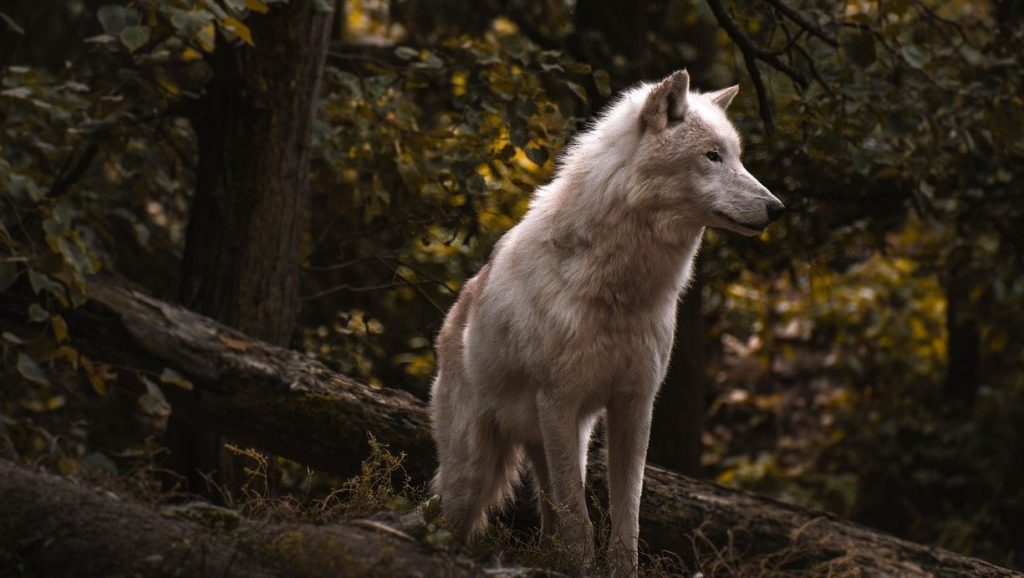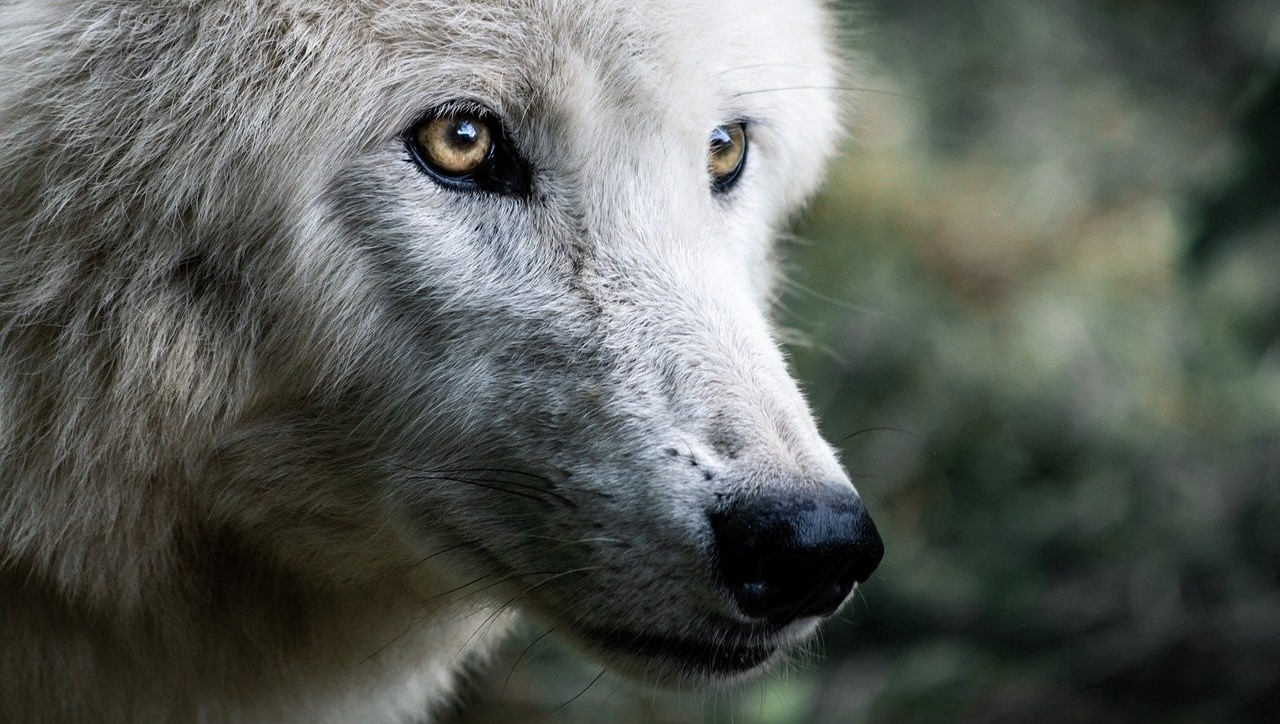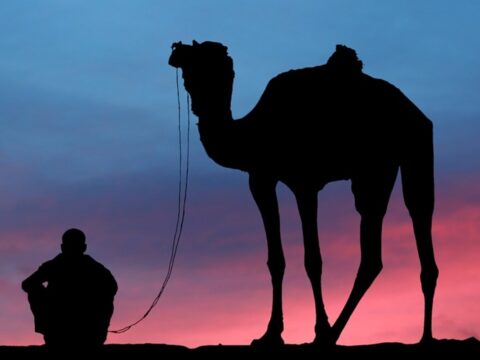Of all the literary villains, the one with the most bite is the Big Bad Wolf. The wolf has been a feared antagonist pretty much since the beginning of storytelling. Think about it: of all the fairy tales with wolves, can you think of even one in which Mr. Wolf isn’t the villain?
In my research for this post, I found that wolves are an almost universally feared and hated animal. Wolves have been hunted to near extinction on every continent on earth. But here’s the thing: the wolf’s evil reputation is actually quite unrealistic and unearned. And there are many reasons why.
Where Did Wolf Hatred Start?
This might surprise you, but wolves aren’t actually dangerous to human beings. In fact, archeological evidence suggests that human hunter gatherers and wild wolves had a symbiotic relationship. Hunters would follow wolf packs to find wild game, and the humans would leave lots of scraps for the wolves to eat in return.
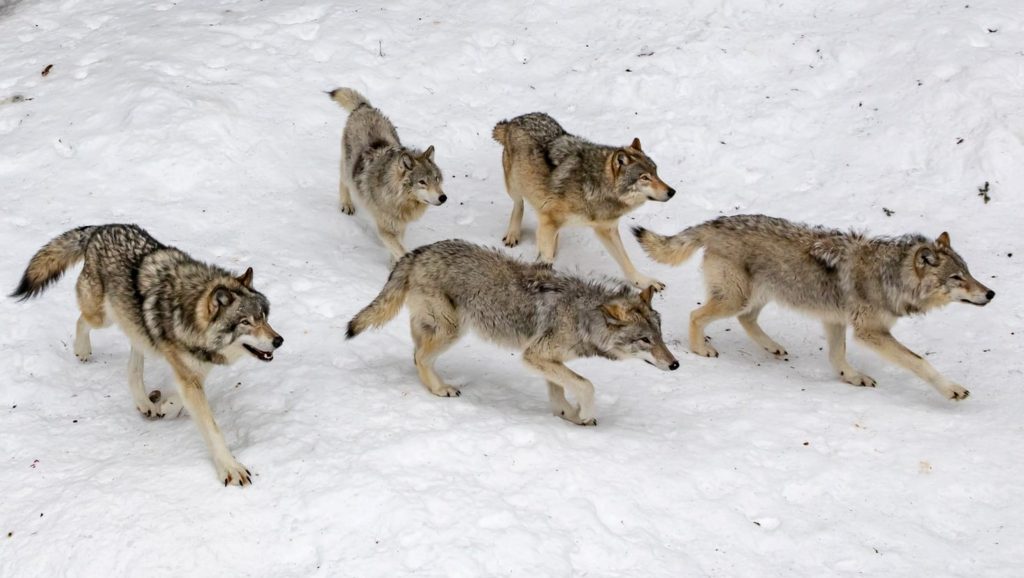
Early humans had a deep respect for wolves and recognized the similarities we share. Like us, wolves are social animals that live in packs, mate for life, and work together to take down prey in incredibly intelligent ways. Some Native American tribes even believe that their first ancestors were wolves who were transformed into men.
It wasn’t until humans began to farm and form agricultural communities that we began to prefer domesticated dogs as our companions and breed animals for our food rather than relying on hunting alone. Unsurprisingly, this is also when our relationship with the wolf unraveled.
Not By the Hair of My Chinny Chin Chin
Once humans became farmers, the same wolves that were once respected became hated predators. Wolves would sneak into corrals to kill and carry off livestock, and of course angry farmers had no love for the thieves destroying their livelihood. Wolves quickly gained a reputation for their vicious, bloodthirsty ways. Thanks to their stealthy entrances into sheep folds, wolves also became a symbol of deceit and trickery.
Does the phrase “a wolf in sheep’s clothing” ring a bell?
Dr. Kirk Robinson has some fascinating thoughts on how the wolf became so vilified throughout history. Beyond their threat as predators, wolves have come to represent everything that modern humanity left behind when we became “civilized.” Wolves are the ultimate symbol of untamed wilderness, and Robinson suspects that wolves represent everything humans fear. They symbolize the deepest parts of ourselves that we have rejected: namely our connection with nature.
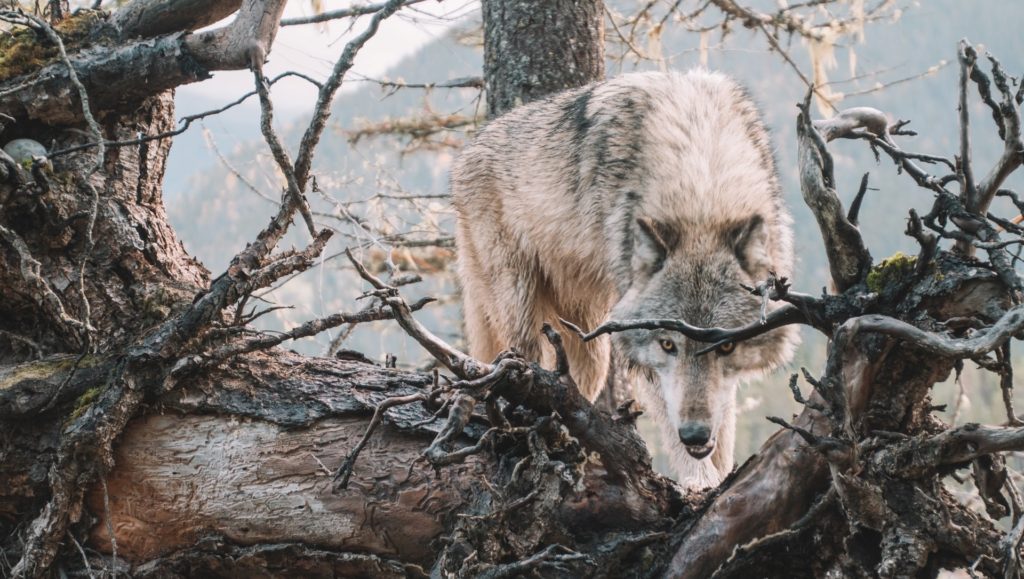
4 Iconic Fairy Tales with Wolves
Perhaps one of the most interesting things about fairy tale wolves is the role they play in the stories. You can bet your bottom dollar that the wolf is the bad guy, but not all wolves interact with heroes in the same way.
Let’s explore four of the most well-known fairy tales with wolves:
1. The Three Little Pigs
An absolute classic. This story originated in England and was written down by Joseph Jacobs in the late 1800s. It’s remained popular enough that most five-year-olds today can tell you about the Big Bad Wolf who wreaks havoc on three little pigs’ houses: one made of straw, one of sticks, and one of bricks.
The wolf huffs and puffs the first two right down (and eats the two brothers I might add), but the brick house won’t budge. Not one to give up, Mr. Wolf tries to lure out the third pig three different times with promises of turnips, fresh apples, and a county fair. When none of his tricks work, the wolf resorts to climbing down the chimney where a pot of boiling water awaits. The wolf dies a scalding death, and in the original story the final surviving pig actually eats the wolf as HIS supper. Wow.
You’ll notice that the main themes here are keeping the wolf from entering your domestic space, the wolf’s voracious appetite, and the great lengths of deception wolves are willing to take.
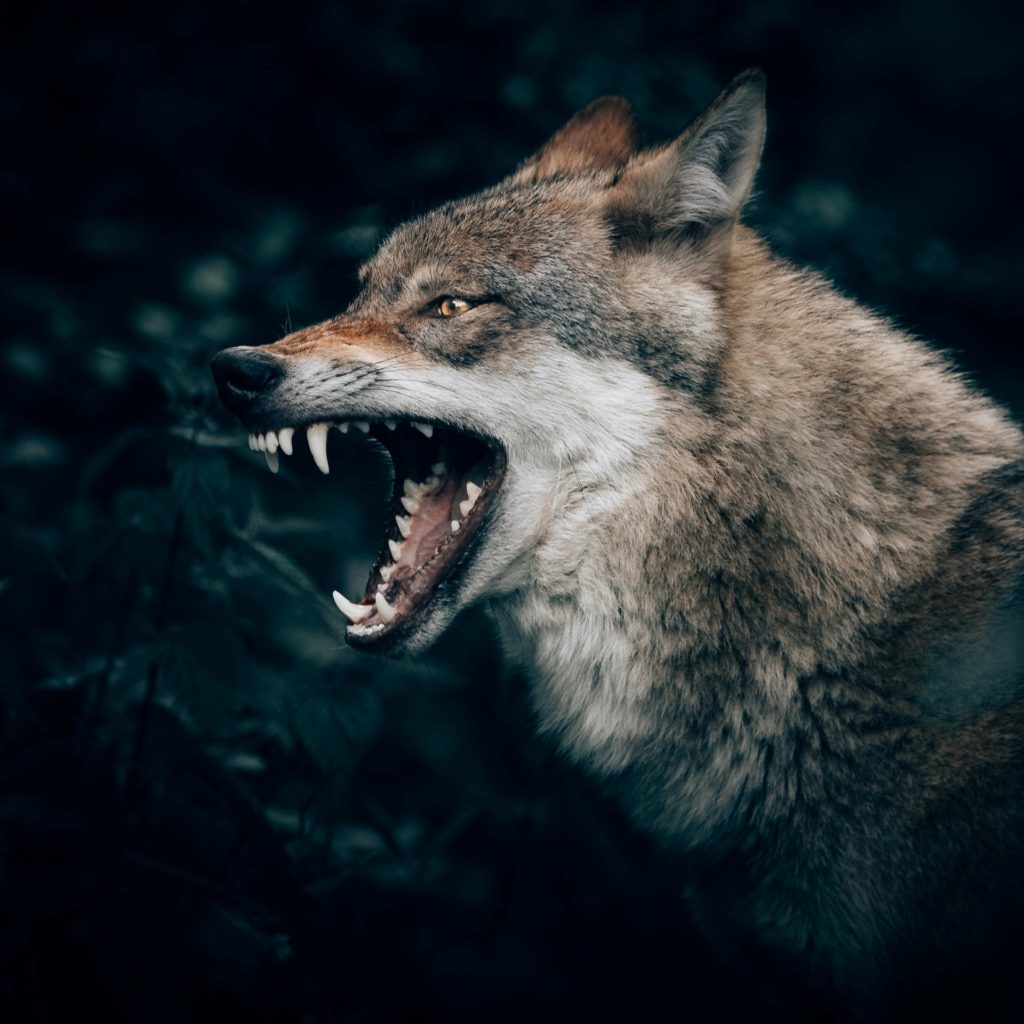
2. The Wolf and the Fox
This is an obscure tale by the Grimm Brothers about a greedy wolf who basically turns a fox into his indentured servant. Mr. Wolf demands that the fox find him something to eat or else he’ll eat the fox himself. To avoid death, the fox brings the wolf food multiple times, but nothing can satisfy his unending appetite.
Finally, the fox leads the wolf to a farmer’s cellar filled with meat. While the wolf devours everything in sight, the farmer bursts in on them. Sly Mr. Fox is thin enough to escape through the hole they dug into the cellar. But greedy Mr. Wolf is too fat to get out, and the farmer kills him. You can always trust a wolf villain to die at the end of any story.
Notice here that the wolf’s main character traits are thievery, viciousness, and gluttony. Interestingly, even the fox—who is also known for robbing hen houses—still comes off better in this story. Even in comparison to other predators, the wolf is the worst of the worst.
3. The Wolf and the Seven Young Kids
This is another lesser-known fairy tale in the Grimms’ collection. Here a mother goat leaves her seven little ones at home and warns them not to let the wolf in. Twice the wolf tries to trick the kids into opening the door with no success. The third time, Mr. Wolf threatens a baker to disguise his black paws with flour or he’ll eat the man, and the terrified baker complies. This is the first story in which a wolf poses any kind of danger to a human.
With white paws and a disguised voice, the wolf finally tricks the kids into opening the door and eats all except one. When Mom comes home, she and her last kid find the wolf sleeping under a tree and cut him open to save the others. Naturally, the wolf was greedy enough to swallow them whole, and they fill the wolf’s stomach with stones and sew it up. When the wolf awakens and drags himself to the well for some water, he falls in and drowns.
If you think that ending sounds slightly familiar . . .
4. Little Red Riding Hood
You’d be right! The Grimms and Charles Perrault both wrote versions of Little Red Riding Hood, and the wolf plays the same role in both of them. He meets Red in woods, tricks her into telling him where her grandmother lives, swallows the woman, and pretends to be Grandma to swallow the little girl too.
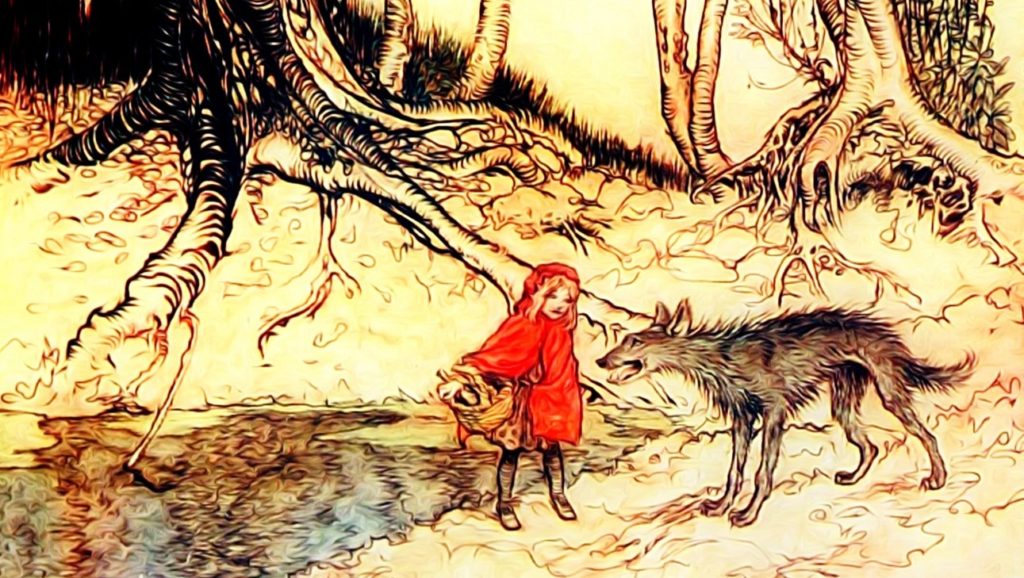
In Perrault’s version she dies right there, but the Grimms introduced a kind woodsman to cut open the wolf’s stomach and rescue his victims that were swallowed whole. Granny and Red fill up the wolf’s stomach with stones and sew it shut. When the wolf wakes and tries to run away, he falls over dead.
Just like in the story of the seven young kids, the wolf uses deception to secure his meal and is characterized for his greed and gluttony. He waits patiently to eat both women rather than eating up the little girl in the woods. And unlike the other stories where the wolf is a bane strictly to other animals, by the time the Grimm fairy tales came around, human beings were on the wolf’s menu.
But Wolves Have Never Actually Been a Threat to Humans
For the most part, wolves are actually scared of people. The International Wolf Center has collected data for centuries about wolves’ interactions with humans, and according to statistics, wolf attacks are exceptionally rare. In fact, you’re more likely to get struck by lightning or to die in a car collision with a deer than you are to be injured by a wolf in any way. Food for thought.
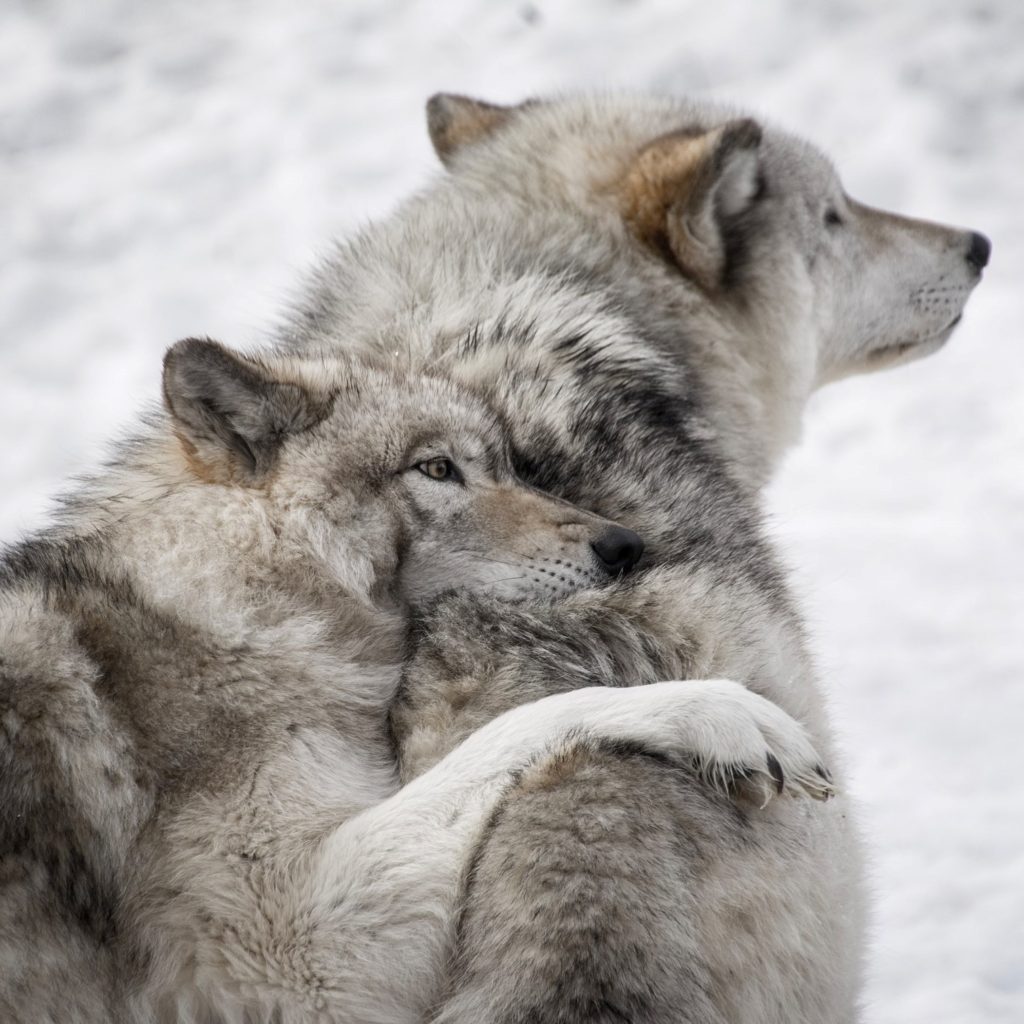
But the hatred of wolves has certainly left its mark. Mass extinction of wolves has had a negative impact on environments the world over. Without predators to hunt them, animals like deer are seeing skyrocketing overpopulation, which leads to many other problems.
These days, countries around the world are actually trying to bring the wolves back. Germany is actively breeding and resettling wolves into German forests. And there hasn’t been a single wolf attack on humans since this project started over twenty years ago.
A Falsely Maligned Villain
The truth is that all the terror in fairy tales with wolves is wildly over exaggerated. Wolves are majestic, intelligent creatures that hunt and eat for the same reason all other animals of prey do: to survive. They aren’t bloodthirsty or gluttonous. They’re certainly not interested in swallowing your grandma or any red-caped little girls.
The most important thing to learn here is that even though fairy tales reveal common cultural fears, that doesn’t make the fear rational or justified. Symbolism is a powerful thing, and unfortunately for the wolf population, their label as creatures of violence and vice stuck around.
What’s important for us as modern readers is to see the truth between the lines and embrace it in ways that our ancestors didn’t. ❧
